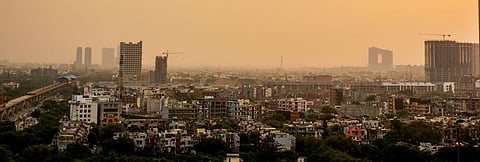

Since the evening of May 6, the particulate matter 10 (PM10) concentration in Delhi has plunged to the ‘very poor’ category taking the overall air quality down to poor. This is primarily due to the dust coming in from the dry west Rajasthan, accelerated by high temperatures and high surface winds.
Dust particles from Rajasthan are drifting towards the National Capital Region (NCR), causing a dip in the air quality in Delhi. The average concentration of coarser particles like PM10 in Delhi is more than three times the standard.
The urban heat island effect has led to the formation of a low pressure over Delhi, which is causing the movement of the wind towards the capital. The direction of the wind currently is west-south-west bringing in dust from Rajasthan.
During summers, the mixing height is usually high, allowing the dispersion of pollutants and less accumulation near the ground surface. Further, the current wind speed in Delhi is very high — close to 10-15 kilometre per hour — which is simultaneously cleaning the air.
According to the Indian Institute of Tropical Meteorology (IITM), air quality will remain in the ‘very poor’ category until May 8, following which it will improve due to expected western disturbance and thunderstorm. However, it has also forecasted an occasional episode of sudden peak in dust at isolated places within Delhi.
For more than 3 billion years, the Aravallis have stood strong against the advance of the Thar Desert towards the fertile soils of eastern Rajasthan and the Indo-Gangetic plains — preventing dust from entering Delhi.
However, now, the oldest mountain chain stands degraded — the range has shrunk by 40 per cent over the last four decades. The Aravalli range plays a critical role in checking the wind velocity and evaporation to prevent sand migration from the Thar Desert to Delhi-NCR.